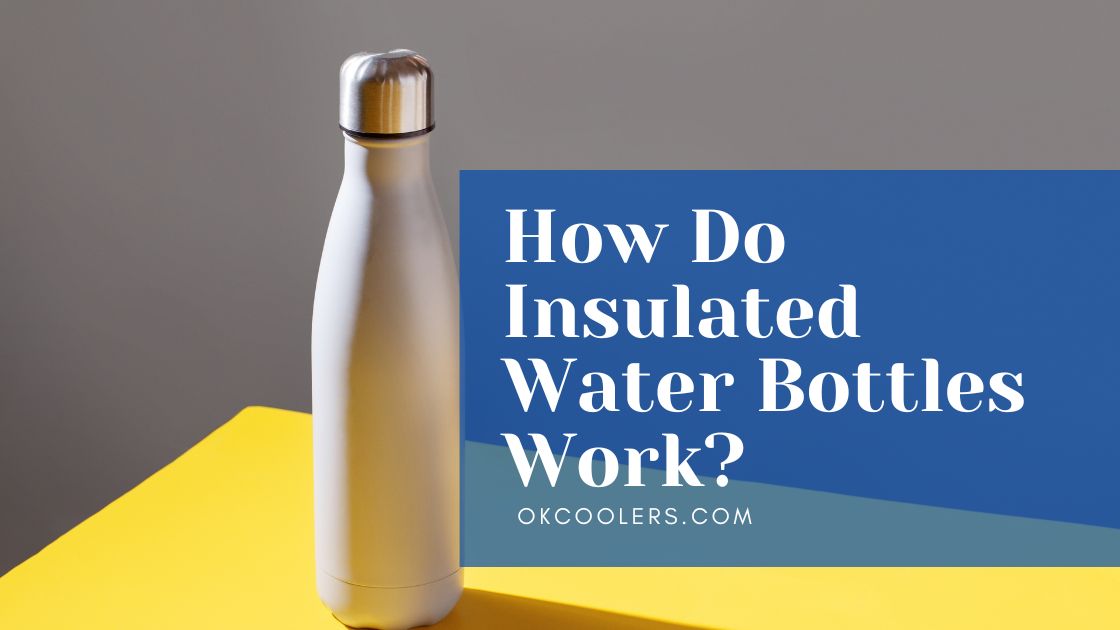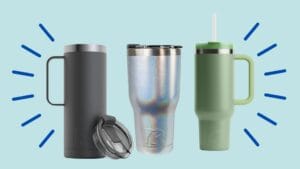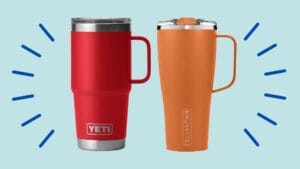How do insulated water bottles work? Welcome to our comprehensive guide on insulated water bottles. If you’ve ever wondered how these bottles keep your beverage hot or cold for several hours, you’re not alone. Insulated water bottles are not just your everyday water containers; they are designed with features that help maintain the temperature of your drink, be it hot coffee for your morning commute or icy-cold water for your afternoon workout.
In this article, we will delve into the science behind these brilliant inventions. From the manufacturing process to how they actually work and how long they last, we’ve got all your questions covered. Stay tuned to become an expert on this everyday essential!
How Do Insulated Water Bottles Work Quick Guide
To comprehend How Do Insulated Water Bottles Work, we’ll learn about the parts of the water bottle that makes it work. Understanding these critical components will help you appreciate the science and engineering behind insulated water bottles. For more details, continue below.
- Outer Layer: This is the external part of the bottle that you hold. It’s designed to remain at a constant temperature, regardless of the temperature of the liquid inside.
- Inner Layer: This is the internal container where the beverage is stored. It’s usually made of a material like stainless steel, which is excellent for maintaining temperature.
- Insulating Layer: Sandwiched between the inner and outer layers, this vacuum layer is the heart of an insulated water bottle. It inhibits heat transfer, keeping your drink hot or cold for a longer period.
- Cap: This is not just a cover for your bottle, but an important part of the insulation system. It’s usually insulated to prevent heat transfer and equipped with a seal to prevent spills.
- Mouthpiece: Depending on the design, some bottles come with a mouthpiece for easy drinking. This component often has its own insulation.
How Do Insulated Water Bottles Work: Components Explained
Insulated water bottles are a marvel of modern design, with several integral parts that make them function effectively. Next, we will delve into exactly how these parts work together to keep your drink at the perfect temperature.
Outer Layer
The outer leyer or external wall of the insulated water bottle is constructed with materials like stainless steel or double-walled plastic. You’ll find that many bottles have an ergonomic design for a comfortable grip and non-slip surface. This layer also helps keep the contents inside at a constant temperature, even in extreme temperatures.
Inner Layer
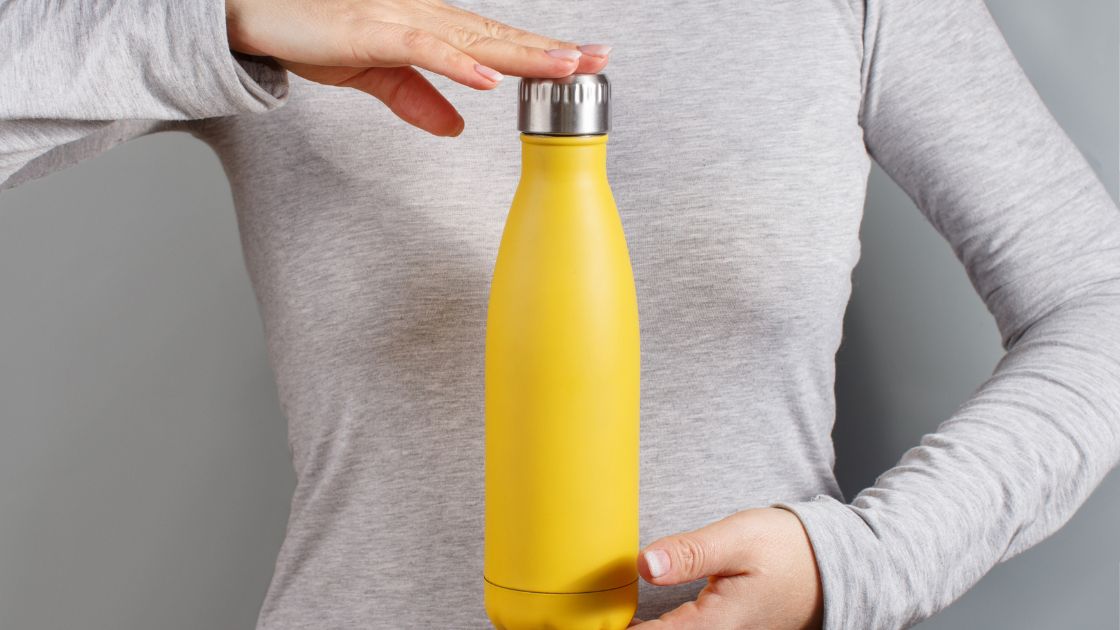
The inner layer, often referred to as the internal wall, forms the compartment that directly holds your beverage. This layer is typically constructed from high-quality, food-grade stainless steel. The choice of this material is no coincidence. Stainless steel is not only safe for food contact but also exceptional at maintaining temperatures, resistant to staining, and impervious to rust and corrosion.
It’s designed to be durable, ensuring that your insulated water bottle lasts for years. Moreover, it can withstand hot or cold beverages without altering the taste. The key to its effective insulation lies in its partnership with the vacuum layer. Working in tandem, they ensure that the conductive and convective heat transfer is minimized, keeping your drink hot or cold for extended periods.
Insulating Layer
At the heart of every insulated water bottle lies the insulating layer. This crucial component distinguishes insulated bottles from regular ones. The insulating layer is essentially a vacuum space that exists between the inner wall and the outer wall of the bottle. The vacuum, being empty space, is devoid of matter; this makes it an excellent insulator because heat requires a medium to travel.
In simpler terms, the vacuum space inhibits heat transfer by conduction and convection between the inner and outer layers. If the beverage inside the bottle is hot, the heat won’t reach the outer layer, and if it’s cold, the warmth from outside won’t reach the beverage.
This is why the temperature of your drink is maintained, and the exterior of the bottle doesn’t affect or get affected by the temperature of the contents inside. The insulating layer plays a vital role in preserving the desired temperature of your beverage for hours on end.
Cap
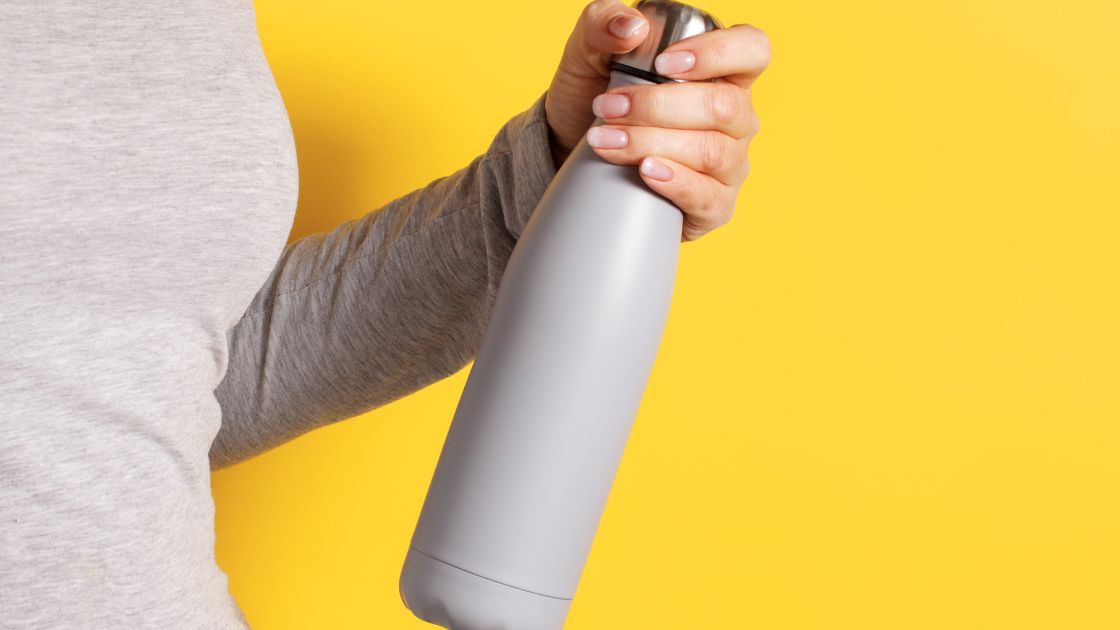
When learningn how do insulated water bottles work; the cap of an insulated water bottle is just as essential as the other parts in keeping your drink at its ideal temperature. The cap should be insulated to prevent heat transfer, and sealed tightly to minimize spills. Some caps also come with a straw or spout for easy sipping.
Mouthpiece/Straw
Some insulated water bottles come with a straw or a mouthpiece for easy drinking. This component is usually insulated to prevent heat transfer and equipped with a cover to avoid spills.
Common Questions About How Do Insulated Water Bottles Work
What exactly is an Insulated Bottle?
An insulated bottle is designed with a double-walled interior, creating a container within a container. The space between the walls is vacuum-sealed to eliminate air, preventing heat transfer between the liquid inside and external factors. But to truly grasp the workings of insulated bottles, we must first explore the intricate science behind heat transfer and the movement of energy between objects.
How do insulated water bottles stop Heat Travel?
Heat travels and transfers through three distinct mechanisms: conduction, convection, and radiation. But what is the connection between these modes of heat transfer and insulated bottles? Well, insulated bottles are ingeniously designed to impede precisely these heat transfer processes.
- Conduction occurs when heat is transferred through direct contact, such as when a frying pan becomes hot after prolonged exposure to a flame.
- Convection, on the other hand, involves the transfer of heat through indirect contact and is commonly observed in liquids and gases. For instance, a cup of coffee gradually loses its warmth when left undisturbed at room temperature.
- Radiation, also known as “infrared radiation,” refers to the transfer of heat through light. Think about the sensation of warmth emanating from an incandescent lightbulb. Interestingly, the heat radiated by infrared objects can be felt even without direct touch (unlike conduction) or the presence of a liquid or gas medium (unlike convection).
Is the temperature inside an insulated water bottle always the same?
When learning how do insulated water bottles work, you also need to know that these are designed to keep your beverages hot or cold for extended periods compared to regular glass exposed to air. However, it’s important to note that they cannot maintain the temperature indefinitely.
Heat transfer can occur at two points in an insulated bottle: the bottle opening and the vacuum between the walls. Whenever the bottle is opened, outside air enters the insulated chamber.
The temporary interaction between the outside air and the beverage inside the bottle can cause slight fluctuations in the temperature within the insulated chamber. The frequency and duration of opening the bottle will determine the amount of outside air that enters, consequently affecting how quickly the temperature of the contents changes.
How do vacuum insulated water bottles work?
Vacuum insulated water bottles utilize a double-walled construction to create a barrier that prevents heat transfer between molecules of different temperatures. Imagine a water bottle with an inner bottle, separated by a vacuum.
This vacuum is a space between two walls made of metal or other materials, completely devoid of air. As a result, there is no heat transfer between the inside of the bottle and the outer wall. This clever design provides exceptional thermal insulation, effectively reducing heat transfer.
Our Ocean Bottle features double-walled stainless steel vacuum insulation, ensuring that your drink remains exactly as you intended it to be.
Video Best Insulated Water Bottle? Yeti vs Hydro Flask vs 12 Other Brands! Let’s find out!
Now that you are aware of how do insulated water bottlers work, its time ot choose your very own water bottle. Take a look at the video below and choose from the best insulated water bottle!
Final Thoughts
In conclusion, insulated water bottles are an ingenious feat of design and engineering. They leverage the principles of heat transfer to maintain the temperature of your beverages for extended periods, whether hot or cold. By minimizing conduction, convection, and radiation, they create a barrier between the internal contents and the external environment.
The vacuum-sealed double wall design, coupled with an insulated cap and mouthpiece, work hand-in-hand to provide this unparalleled insulation. The understanding of how do insulated water bottles work can not only help you appreciate the science behind your daily hydration but also make an informed choice when purchasing your next water bottle. Stay hydrated, and choose wisely!

